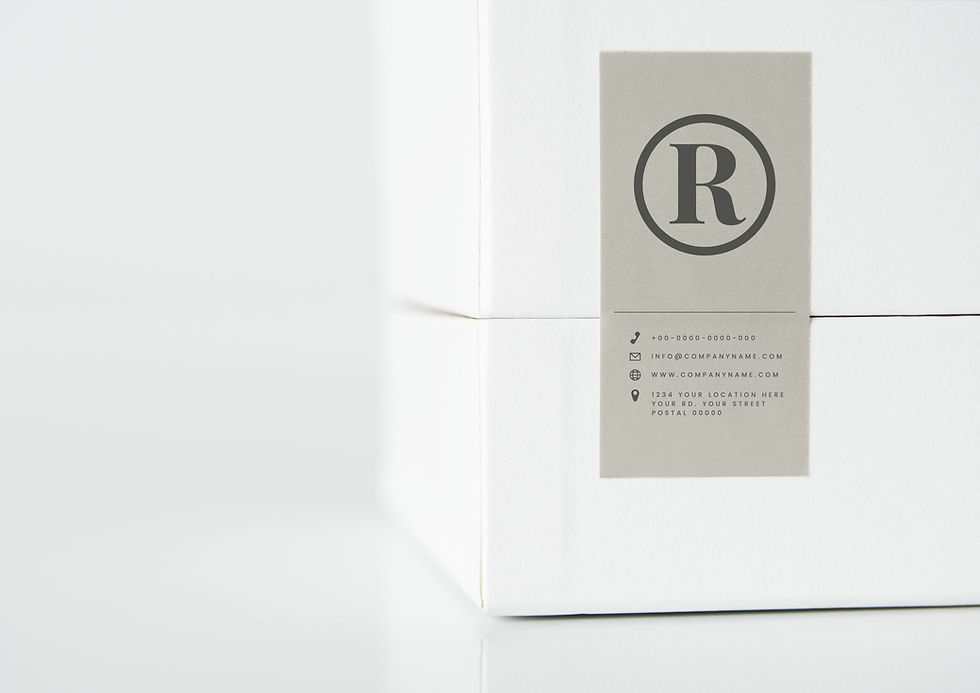A Guide to Trademark Symbols
- Monica

- Mar 16, 2022
- 4 min read
Updated: Mar 17, 2022
As an owner of a trademark, one of your many responsibilities is to guard the trademark from infringement. Of all the ways you can guard your intellectual property, the easiest is by placing the world on notice of your claim of ownership rights.
You are likely familiar with the TM, SM and, ® symbols, but you may not know the very important differences.

Why Use a Trademark Symbol?
The placement of a trademark symbol next to your trademark, whether it is name, logo, or slogan, places the public on constructive notice that someone has claimed intellectual property rights over it. Whether you have a registered trademark or not, if you believe you have trademark rights in your name and logo, you should use a trademark symbol to communicate this.
Which Trademark Symbol
Should You Use?
The choice in which symbol you use may not be a choice at all in some cases. This choice is highly important, and the symbol you use may change over time. To figure this out, let’s look at the function of each symbol:
When to Use the TM Symbol
The TM symbol is likely the most recognized of all the intellectual property symbols. Believe it or not, the TM symbol does not hold much legal significance. The only thing the TM symbol communicates is that the owner of the name or logo claims it as their intellectual property. It’s basically saying, “Hey world, I claim property rights to this name, whatever level of property rights they may be.” You can use this symbol even if you haven’t applied for any level of trademark registration. If you have not started using it before applying for federal registry, we suggest you begin using the TM symbol during the prosecution of your trademark to make your claim clear.
When to Use the SM Symbol
The SM symbol is much like the TM symbol, in that it does not hold much legal significance. So what’s the difference between SM and TM? When you apply for a trademark, you will apply for classes based on the goods and services sold under the mark. The TM symbol is most commonly used for trademarks associated with goods, and the SM symbol with trademarks associated with services. The rules of SM use are the same as the rules of TM use above. If you don’t find SM recognizable, that’s likely because TM has a sort of blanket use and is often used whether the trademark represents goods or services.
When to Use the Circle R Symbol
Unlike the TM and SM, the ® carries not only legal significance, but legal requirements. The circle R may only be utilized once a trademark has been registered with the United States Patent and Trademark Office. You may not use the symbol at any other time, even if your trademark is pending, and even if your trademark has been published. After filing an application, your trademark will receive a U.S. serial number to help identify the mark through the application prosecution. This serial number does not convey the right to use the circle R. It is not until you receive the U.S. registration number that you may call your graphic designer to make the change to circle R. Use of the circle R prior to complete registration is a violation of federal law and may prohibit future registration of the mark.
Do you have to
Use a Trademark Symbol?
There is no legal requirement to use a trademark symbol, whether federally registered or not. However, if your trademark is ever challenged, it is important to be able to prove your ownership, and evidence of constructive notice through use of such symbols will work to your advantage. In fact, you can continue using the TM or SM symbol even after federal registration is complete. But getting a federal trademark is a major process, and we bet that once you understand the differences between all the symbols, you’ll be excited to celebrate that circle R when your mark is registered.
#createyourTM #branding #trademark #intellectualproperty #trademarklawyer #themoreyouknow #ontheblog #design #logo #brand
Monica Ugliuzza, Esq.

Monica is an attorney with a practice dedicated exclusively to trademark law. Monica is the founder and owner of Creative Law Studio, a law firm with creative minds to best serve creative clientele.
Disclaimer: This blog/website is intended to be published for educational and entertainment purposes and to give readers a general idea of the law of trademark. This blog/website is not intended to give any specific legal advice or to target a specific person. Readership of this blog cannot create an attorney-client relationship between you and the publisher. This blog should never be used to substitute the seeking out of personal, legal advice. The discussion of an existing or potential trademark shall not be taken as an endorsement by creative law studio, nor shall the same be taken as an endorsement of creative law studio. The discussion of specific trademarks does not mean that creative law studio is a record attorney for such trademarks.






Comments